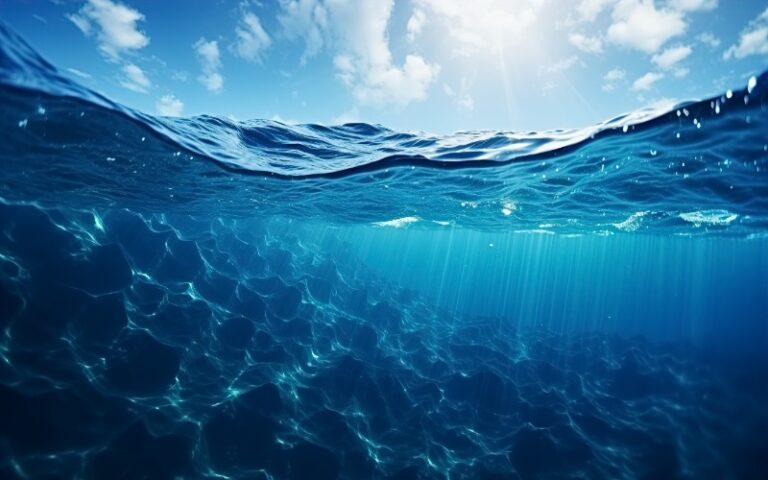
[ad_1]
Likelihood is, you’re carrying round a International Navigation Satellite tv for pc System (GNSS) receiver of some form proper now and have a couple of extra at residence or the workplace, in your telephone, in your automotive, in your watch, pill, and health tracker. We might all be – actually – misplaced with out GNSS, and nonetheless, odds are you don’t know what it’s. What’s behind the satellite tv for pc expertise that guides us by our lives – helps us discover our rideshare, retains farmers on the precise path, and retains development staff secure? It’s all about exact positioning.
In a nutshell, GNSS is a collective time period for International Positioning Techniques (GPS) and different satellite tv for pc navigation programs, and it’s embedded in our day by day lives. From households driving on trip to companies coordinating complicated logistics networks, lots of of tens of millions of customers depend on GNSS for navigation and positioning every single day. It’s important for the whole lot from discovering unexploded ordnance in war-torn nations to bettering golf course water administration to getting picked up from the proper aspect of the airport terminal.
However what’s it actually, and the way will its continued evolution change the way forward for our private {and professional} lives?
Navigating From House
GNSS is a radio navigation system that depends on satellites orbiting the Earth. The primary GNSS satellite tv for pc community was developed within the early Nineteen Seventies by the U.S. Division of Protection for navy and civilian use. In the present day, there are 4 international GNSS networks on the earth, situated in the USA, Russia, Europe, and China, and regional networks in locations like India and Japan.
America’ GPS core constellation of 31 satellites travels in a 12-hour, round orbit, 20,200 kilometers above the Earth. In keeping with NASA, the satellites are positioned in order that not less than six must be observable practically one hundred pc of the time from any level on Earth.
On the bottom, a GNSS system is basically a wise sensor that features a chip or “receiver” and an antenna. The antenna will get alerts from satellites, that are then interpreted by a receiver to offer a location. This GNSS receiver can calculate how lengthy it takes a sign to get from the satellite tv for pc to the antenna. To make this calculation, the GNSS receiver should have the ability to ‘see’ 4 or extra satellites concurrently. You will need to keep in mind that GNSS is a passive system, that means that whereas we are able to use the satellites for positioning, the satellites usually are not able to monitoring how or the place we’re utilizing these alerts.
The Accuracy Benefit
GNSS is just helpful if it’s correct. We’ve all been misplaced on a hike or led down the fallacious street in an enormous metropolis by our mapping programs. That is irritating however probably vital and unsafe for staff in fields like development, farming, and transportation.
The accuracy of each GNSS sign processing answer is measured by its skill to cut back errors that happen when alerts are transmitted from house to Earth. The accuracy of the coordinates your GNSS-enabled system supplies is instantly affected by how shortly and instantly the sign from satellites reaches your system’s antenna. For example, you’ve probably observed that the accuracy of your telephone’s mapping system degrades whereas strolling or driving in a metropolis close to tall buildings. That’s as a result of the sign from house is bouncing off buildings on its option to the receiver, which is your telephone on this occasion.
The second, and arguably bigger, explanation for location errors is expounded to the ionosphere. For those who bear in mind your highschool science class, the ionosphere is the electrically charged layer (ions) of the environment situated between 50 and 1000 km above the Earth. GNSS satellites are situated in medium Earth orbit at about 20,000 km, which suggests the alerts again to Earth are touring by these extremely charged ions. Because the ion energy varies constantly, the direct impact on the alerts varies by time of day, season, geographic location, and photo voltaic exercise.
You’ll probably hear extra about ionospheric disruptions within the coming yr as a consequence of Photo voltaic Cycle 25. It is a time when photo voltaic sunspot exercise is highest, which instantly impacts GNSS sign reliability. For example, in Could, there was a big photo voltaic storm. For many people, the consequence of this storm was the visibility of the Northern Lights in locations the place it’s not usually seen. However it’s greater than fairly lights within the sky – it’s a direct and noticeable disruption to GNSS.
Gnss in Your Pocket and Across the World
So how, precisely, are we utilizing GNSS from each day? The reply is, in ways in which profit us all, however most of us have by no means stopped to consider it. For example, tasks to enhance roads, bridges, airports and different important elements of contemporary society profit from GNSS to enhance productiveness, and security and ship higher high quality, longer-lasting options.
Sundt Building, a development firm in Idaho, is utilizing GNSS to maintain staff and motorists secure on a significant interstate development job web site close to Pocatello, the place the corporate is engaged on the reconstruction of the I-86/I-15 system interchange. One of many greatest challenges of the challenge is sustaining visitors circulation by the slender work zones whereas retaining staff secure so near transferring visitors. GNSS helps by retaining staff off the bottom and in machines, and by retaining these machines working in precisely the proper place on the challenge.
Farmers down the street and world wide use GNSS to correctly place their seeds, steer their machines, apply fertilizer, herbicides, and pesticides with precision, and handle general soil well being and water utilization. This helps farmers work higher and quicker and likewise helps cut back the environmental impression with fewer crop inputs, much less water and waste, and extra exact software of chemical compounds.
GNSS is in use on the roads and highways we journey every single day. Trimble expertise that helps guarantee positioning accuracy, for instance, has been used to assist preserve in-lane positioning for greater than 240 million miles of hands-free driving in GM Tremendous Cruise autos. In Baltimore, Maryland, GNSS helped reroute vans after the Francis Scott Key bridge collapse, and in some nations, exact positioning is used for proof of bundle supply on doorsteps and entrance porches every single day.
It’s additionally probably that you just’ve seen GNSS at work in area robotics – a fast-growing phase that requires exact positioning – for instance, in using autonomous lawnmowers for industrial use, or for the supply of meals, items, and merchandise through drone.
Driving the Future
Developments in GNSS expertise are persevering with to drive improved accuracy at a lower cost level, which is able to proceed to make it higher in difficult environments and relevant to much more day-to-day purposes. We’re additionally seeing GNSS modules evolve to change into smaller and smaller, so that they slot in much more units – like health trackers, watches, and drones.
Over the previous 50 years, GNSS has gone from having a couple of hundred largely navy customers to most individuals proudly owning a number of GNSS-enabled units and vehicles with an accuracy of lower than 10 centimeters virtually anyplace on the planet. What is going to the following 50 years carry? It’s laborious to inform with no crystal ball, however we do know this: it’s going to get us there with precision.
[ad_2]
Supply hyperlink







